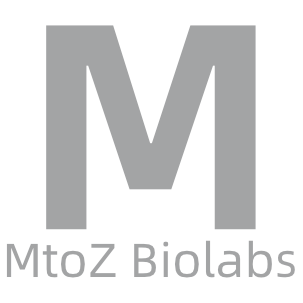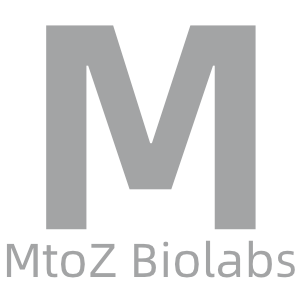Original Service
-
Ubiquitin-proteomics utilizes high-resolution mass spectrometry to systematically analyze ubiquitination sites within the proteome and their dynamic changes. MtoZ Biolabs offers professional ubiquitin-proteomics services to help scientists fully understand the biological significance of ubiquitination and its role in diseases.
-
MtoZ Biolabs offers acetyl-proteomics services using advanced liquid chromatography-tandem mass spectrometry (LC-MS/MS). This technology combines the high separation capability of high-performance liquid chromatography with the high sensitivity of mass spectrometry, enabling efficient and accurate identification and quantification of acetylated proteins.
-
MtoZ Biolabs offers phospho-proteomics services using advanced liquid chromatography-tandem mass spectrometry (LC-MS/MS). This technology combines the high separation capability of high-performance liquid chromatography with the high sensitivity of mass spectrometry, enabling efficient and accurate identification and quantification of phosphorylated proteins.
-
MtoZ Biolabs utilizes high performance liquid chromatography-tandem mass spectrometry (HPLC-MS/MS) for the precise identification and analysis of PTMs. This advanced technology combines efficient HPLC separation with sensitive MS/MS detection, ensuring accurate identification and quantification of various PTMs in complex biological samples.
-
SILAC (Stable Isotope Labeling with Amino Acids in Cell Culture) is a mass spectrometry-based quantitative proteomics technique. By incorporating stable isotope-labeled amino acids into cells during culture, SILAC enables precise quantification of proteins in mass spectrometry analysis. The core principle involves adding labeled amino acids, such as ¹³C₆-lysine or ¹³C₆,¹⁵N₄-arginine, to the culture medium, allowing cells to integrate these labeled amino acids into newly synthesized proteins. During mass spe
-
Antibody epitope mapping is a technique used to identify specific regions (epitopes) on an antigen that bind to antibodies. This mapping provides detailed information about antibody-antigen interactions, including the precise identification of linear or conformational epitopes on the antigen, quantitative data on antibody-epitope binding strength, information on epitope exposure and accessibility, and insights into cross-reactivity with similar epitopes on different antigens. Such information is crucial for
-
Amino acid composition analysis involves the quantitative determination of amino acids in protein or peptide samples to ascertain their relative or absolute content. This analysis enables the identification of amino acid types present in the sample, quantitative assessment of individual amino acids, and understanding of the overall amino acid composition, as well as the evaluation of the purity and quality of proteins or peptides.
-
Peptide mapping is a method used to analyze protein sequences by fragmenting proteins into smaller peptides, which are then separated and identified using chromatography and mass spectrometry. This technique is highly efficient and precise, and it is extensively applied in the study of protein structure and function. Peptide mapping allows us to determine protein amino acid sequences, verify primary protein structures, identify post-translational modifications (PTMs) such as phosphorylation, glycosylation,
-
N-terminus (amino terminus) and C-terminus (carboxyl terminus) refer to the two ends of a protein or peptide chain. The N-terminus, containing a free amino group (-NH2), marks the starting point of the amino acid sequence, while the C-terminus, with a free carboxyl group (-COOH), represents the end. These terminal sequences can include signal peptides, localization sequences, or functional domains that guide protein folding, localization, and function. Modifications such as N-terminal formylation or acetyla
-
The molecular weight of a biological product is the total mass of all its constituent atoms, typically expressed in Daltons (Da) or kilodaltons (kDa), where 1 Da equals the mass of a hydrogen atom. Molecular weight analysis of biological products, such as proteins, antibodies, and nucleic acids, is a critical technique that provides essential structural information and quality control parameters for research and development. This analysis can determine the exact mass of a biomolecule and distinguish between
How to order?







